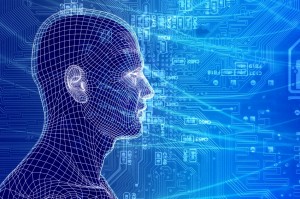Are Machine Learning (ML) and Pattern Recognition (PR) refering to the same field? Elsewhere we discussed the difference between Artificial Intelligence (AI) and PR. We tried to characterize them in their origin as the Platonic and Aristotelian ways of gaining knowledge: starting from the concepts or starting from the observations. But where do we have to position ML? It seems to be an independent field with its own journals and conferences. Is it dealing with the same topics as PR?
 What hase been observed between AI and PR definitely also holds for ML: much of the work presented in that field could also have been presented on the AI or PR platforms. The name states that it is about learning, usually learning from examples and not primarily about reasoning. This is very similar to PR. The restriction to machines is not made by PR, although in practise also PR entirely deals with computer implementations.
What hase been observed between AI and PR definitely also holds for ML: much of the work presented in that field could also have been presented on the AI or PR platforms. The name states that it is about learning, usually learning from examples and not primarily about reasoning. This is very similar to PR. The restriction to machines is not made by PR, although in practise also PR entirely deals with computer implementations.
But there is an essential difference in focus. For ML the computer is the target, for PR it is a necessary mean. The target of PR may be outside the machine: it is the recognition of patterns itself, in general, without restrictions. The machine is a powerful device to make this process explicit. If it is well defined it can be studied by programming it on a computer. Such an instrumentation facilitates experimental studies. In ML it is not the recognition but the learning process that is studied. Its aim is not to simulate or mimic the human recognition process but to study the machine procedures for learning.
Recognition or learning
What is the difference between the recognition of patterns and learning? The first deals with any set of observations in which the human observer sees patterns. It may be applied in any area where measurements or observations are collected. Existing learning procedures can usually not be applied directly. It may be needed to firsst relate the observations. They should be brought into a common domain such that the existing learning procedures can be applied as they need a proper representation of the objects it is applied to.
Pattern recognition primarily cares about the representation. It faces the challenge to deal with images of different sizes, orientations and illumination conditions, or with time signals of arbitrary length and varying offset. Pattern recognition includes preprocessing procedures to normalize observations, to deal with invariants and to define proper features and distance measures. Once a proper representation is found (may be it has to be redefined later), learning procedures become of interest and the results of ML can be applied.
The direction
Like in the discussion on AI and PR we find here once more an opposition of directions. PR starts with real world problems and find at some moment the need to use ML results. ML from its side starts with a well defined machine environment and a given representation of the external problems, but then starts to search for applications to validate its results. In short, PR studies problems in need for a solution, ML studies solutions and is searching for problems.
Coming from the PR side, we are now back to the Fabio Roli question: “What is the core-business of PR?” with as an answer: “Representation”.
Filed under: Foundation
